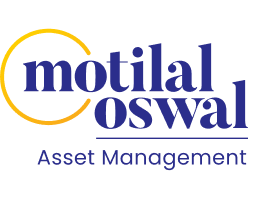Introduction
Retirement planning is among the most essential components of financial planning that involves thoughtful thinking and well-considered actions. With their diversified portfolios and professional management characteristic, mutual funds is one of the solution to financially secure future after retirement. In this blog, we will discuss on the various benefits of investing in mutual funds for planning your retirement and how they can help you reach your long-term financial objectives.
The Importance of Retirement Planning
Retirement is an era of everyone’s life that is eagerly anticipated by most people, but it needs careful preparation for a stress-free retirement life. Considering the life span and daily rising living expenses, retirement planning should begin at the early stages so as to have enough retirement fund at end.
Mutual Funds: A Smart Investment Choice for After-Retirement Years
1.Diversification: Schemes of mutual funds are deployed in varied securities such as stocks, bonds, and money market instruments. Diversification therefore helps to spread risk and shield your investments from the volatility of markets.
2.Professional Management: Fund Managers of mutual funds are professionals who possess relevant to Expertise and experience to make sound investment decisions. Their object is to maximize the returns while effectively managing risk.
3.Variety of Options: Mutual funds provide a wide range of investment items that meet different levels of risks and investment visions. If you’re searching for growth, income, or a blending of both, there is a mutual fund for you.
4.Systematic Investment Plans (SIPs): As SIP gives you the opportunity to invest a fixed amount periodically, this in turn encourages you to develop a disciplined savings habit. This regular investment can make a good amount of money over the years.
5.Tax Benefits: Equity Linked Savings Schemes (ELSS) Schemes is one of the option to tax benefits under Section 80C of the Income Tax Act, 1961 ELSS. The tax benefits may allow you to save on taxes and build a retirement nest egg.
Factors to Consider Before Investing in Retirement Funds
1.Investment Goals: Define your retirement goals, including the desired retirement age, lifestyle, and income needs. This will help determine how much you need to save and the investment strategy to adopt.
2.Risk Tolerance: Assess your risk tolerance, as it will influence the type of retirement funds you should invest in. Those with a higher risk tolerance may opt for equity-oriented funds, while those with a lower risk tolerance may prefer debt-oriented funds.
3.Time Horizon: Consider your time horizon until retirement. A longer time horizon allows for a more aggressive investment approach, while a shorter time horizon may require a more conservative approach.
4.Costs and Fees: Understand the costs and fees associated with the retirement funds, including management fees, administrative fees, and any other charges. High fees can eat into your returns over time.
5.Diversification: Ensure that your retirement funds are diversified across different asset classes to reduce risk. Diversification can help mitigate the impact of market fluctuations on your investments.
6.Tax Implications: Consider the tax implications of your retirement funds, both in terms of contributions and withdrawals. Look for tax-efficient investment options to maximize your returns.
7.Performance: Evaluate the past performance of the retirement funds you are considering. While past performance is not indicative of future results, it can give you an idea of how the fund has performed in different market conditions.
How Mutual Funds Can Help in Retirement Planning
1.Wealth Accumulation: By investing regularly in mutual funds, you can accumulate a substantial corpus over the years. This corpus can then be used to generate a steady income stream during retirement.
2.Inflation Hedge: Mutual funds have the potential to offer returns that expects to beat inflation over the long term. This is crucial for retirement planning, as it helps maintain the purchasing power of your savings.
3.Flexibility: Mutual funds offer flexibility in terms of investment amount, frequency, and choice of funds. This flexibility allows you to tailor your investments to meet your specific retirement goals.
4.Liquidity: Mutual funds are relatively liquid, allowing you to redeem your investments partially or fully as per your requirement. This liquidity can be useful during emergencies or to meet other financial goals in retirement.
Strategies for Retirement Planning with Mutual Funds
1.Start Early: The power of compounding can significantly boost your retirement savings. Start investing in mutual funds as early as possible to take advantage of this.
2.Asset Allocation: Maintain a balanced asset allocation strategy based on your risk tolerance and investment horizon. Allocate your investments across different asset classes to reduce risk.
3.Review and Rebalance: Regularly review your mutual fund investments to ensure they are aligned with your retirement goals. Rebalance your portfolio if necessary to maintain the desired asset allocation.
4.Stay Invested for the Long Term: Mutual funds is the suitable product for long-term investments. Stay invested for the long term to benefit from the potential growth of your investments.
Mode of Investment for Retirement Funds
The mode of investment for retirement funds depends on various factors, including your investment goals, risk tolerance, and time horizon. Some common modes of investment for retirement funds include:
1.Systematic Investment Plans (SIPs): SIPs allow you to invest a fixed amount regularly in mutual funds. This disciplined approach to investing can help inculcate a savings habit and accumulate a significant corpus over time.
2.Lump Sum Investments: If you have a lump sum amount available for investment, you can consider investing it in retirement funds. However, it’s important to consider your risk tolerance and investment goals before making a lump sum investment.
3.Asset Allocation: Consider the asset allocation strategy for your retirement funds. Allocate your investments across different asset classes, such as equities, bonds, and cash, based on your risk tolerance and investment horizon.
Different types of plans for retirement
There are various types of retirement plans, each designed to meet different needs and risk preferences:
1.Equity Funds:
•These funds primarily invest in stocks and equities, offering the potential for higher returns but also higher volatility.
•Ideal for investors with a higher risk tolerance and a longer investment horizon.
2.Debt Funds:
•These funds invest primarily in fixed-income securities such as government and corporate bonds.
•Suitable for investors with a low-risk appetite seeking stable returns.
3.Hybrid Funds:
•Hybrid retirement funds invest in a combination of equity and debt instruments.
•They aim to balance capital appreciation with income generation, making them suitable for investors looking for a middle ground between risk and return.
Who Should Invest in Retirement Funds?
Retirement funds are suitable for anyone looking to build a nest egg for retirement and ensure a financially secure future. Here are some individuals who should consider investing in retirement funds:
1.Young Professionals: Young professionals starting their careers can benefit from investing in retirement funds early. Starting early allows for a longer investment horizon and the potential to accumulate a significant corpus over time.
2.Middle-aged Individuals: Middle-aged individuals who have not yet started saving for retirement should consider investing in retirement funds. While starting late, they can still benefit from the power of compounding and build a substantial retirement corpus.
3.Self-Employed Individuals: Self-employed individuals, such as freelancers or entrepreneurs, may not have access to employer-sponsored retirement plans. Investing in retirement funds can help them build a retirement savings portfolio.
4.Individuals with Pension Gaps: Individuals with pension gaps, such as those with irregular income or gaps in their employment history, can benefit from investing in retirement funds to supplement their retirement income.
5.Those Looking for Tax Benefits: Retirement funds offer tax benefits, such as tax deductions on contributions and tax-deferred growth. Individuals looking to save on taxes can consider investing in retirement funds.
Conclusion
Mutual funds offer a reliable and effective way to secure your retirement years. By investing in mutual funds early, diversifying your portfolio, and staying invested for the long term, you can build a substantial retirement corpus that aids to provide you a financial security and peace of mind. Start planning for your retirement today and make mutual funds a part of your retirement strategy.
FAQ’s
1.How much should I save for retirement?
Aim to save enough to maintain your desired lifestyle in retirement. A general guideline is to save at least 10-15% of your income each year.
2.When should I start saving for retirement?
Start saving as early as possible to take advantage of compounding. Even small contributions made early can grow significantly over time.
3.What is the best retirement investment strategy?
A diversified investment portfolio that matches your risk tolerance and goals is typically recommended. Consider a mix of stocks, bonds, and other assets.
4.How can I estimate my retirement expenses?
Estimate your retirement expenses by reviewing your current spending habits and considering factors like healthcare costs, inflation, and any potential changes in lifestyle.
5.What if I haven’t saved enough for retirement?
If you’re behind on savings, consider increasing your contributions, working longer, or adjusting your retirement goals. Consulting a financial advisor can help you create a plan.
6.How can I protect my retirement savings from market volatility?
To protect your retirement savings from market volatility, consider diversifying your investments, investing in more conservative options as you near retirement, and avoiding emotional decisions based on short-term market fluctuations
Disclaimer: This publication is pursuant to Investor Education and Awareness Initiative by Motilal Oswal Mutual Fund. This shall not be construed as offer to invest in any financial product or Scheme. The objective of this publication is restricted to informational purposes only. All investors have to go through a one-time KYC (Know Your Customer) process. For further details on KYC, Change of address, phone number, bank details etc. list of SEBI registered Mutual Funds and redressal of complaints including details about SEBI SCORES portal, visit link https://www.motilaloswalmf.com//New_Page/KYC-and-Redressal-of Complaints/9, SMART ODR portal, visit link https://smartodr.in/login. Investors should invest only with SEBI registered Mutual Funds details of which can be verified on the SEBI website under “SEBI Intermediaries/ Market Infrastructure Institutions.” This has been issued on the basis of internal data, publicly available information and other sources believed to be reliable. The information contained in this document is for general purposes only and not a complete disclosure of every material fact. The information/data herein alone is not sufficient and shouldn’t be used for the development or implementation of an investment strategy. It should not be construed as investment advice to any party the blog does not warrant the completeness or accuracy of the information and disclaims all liabilities, losses and damages arising out of the use of this information. Mutual Funds are subject to market risk. Read the offer documents before investing. Readers shall be fully responsible/liable for any investment decision taken on the basis of this article.
Mutual Fund investments are subject to market risks, read all scheme related documents carefully.












































